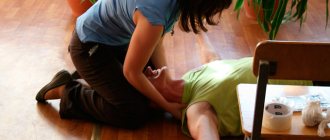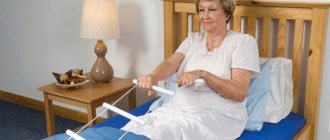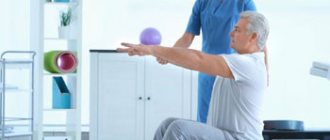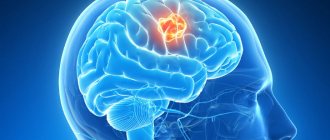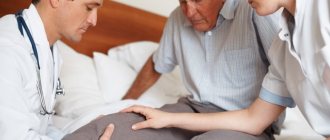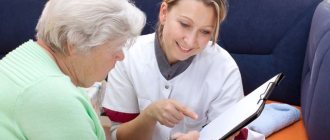Is a stroke a valid reason for disability?
Elderly citizens often face this problem, although the anomaly can also affect young people. In any case, experts divide stroke into:
- hemorrhagic, characterized by profuse bleeding of the brain, affecting most of it;
- ischemic, in which, against the background of minor hemorrhage, massive blockage of blood vessels is observed.
In both cases, a functional malfunction in the brain cannot be ruled out. For example, the following are diagnosed:
- paresis, paralysis;
- chewing dysfunction;
- decrease or loss of memory;
- deterioration in the ability to speak;
- visual abnormalities up to loss of function;
- problems with the musculoskeletal system.
One of the listed manifestations is often enough for experts to record the inability of the subject to take care of himself independently and his need for support (including from the state).
To cope with the consequences of the anomaly, exercise therapy, massage, and physiotherapy are used as rehabilitation. The more competent and quickly the health improvement measures were taken, the higher the chances of getting a light group.
Who is eligible for disability after a stroke?
The disease in question is included in the list of health problems that qualify for special status. But according to the law, in addition to diagnosis, ITU experts must observe a serious limitation of capabilities (at least one). That is, in case of successful rehabilitation, they are not sent for examination.
The question of establishing a group becomes relevant only if there is no positive result from treatment or if the prognosis is unfavorable (there is a risk of a second strike, etc.).
The nervous system plays a key role in our lives. If something happens to it, it affects absolutely the entire body. Anastasia Chernykh, a neurologist at the Abakan Interdistrict Clinical Hospital, told Chance about what cardiovascular diseases the residents of Abakan suffer from, who is most susceptible to strokes, and how to increase the chances of recovery.
Chance dossier:
Anastasia Sergeevna Chernykh.
She graduated from Tomsk Medical Institute and completed her residency at the Department of Neurology. Practicing doctor since 2000.
– Are neurologist and neuropathologist the same specialization?
– Absolutely right, this is one profession.
– We don’t have much time, so let’s get to the main thing: what symptoms should you immediately see a neurologist?
– The list of symptoms is quite large: pain in the spine, headaches, dizziness, memory loss, decreased performance / absorption of any material, increased fatigue, nervousness, etc. The spectrum is huge.
– How to get an appointment? Does your therapist refer you to a neurologist?
– Yes, the initial appointment is organized through a local therapist. So, the patient already has a preliminary diagnosis and primary examinations before the appointment. Without this, contacting a neurologist is pointless - the patient loses valuable time for additional examinations and re-registration.
– What disease do you most often encounter in practice?
- It's a stroke.
– Are there any precursors to this condition?
– I can’t say that there are any clear harbingers. Signs of incipient hemorrhage may include:
- loss of visual fields, when a person has a blind spot in front of his eyes;
- focal disorders: motor, speech, sensory (when something goes numb).
But we all know the steps needed to check whether a person is developing a stroke: ask them to smile, raise both hands, say their name or a simple sentence. During a stroke, the patient will have difficulties with all these simple actions.
– What about predisposition to stroke?
– There are people predisposed to stroke. The disease accumulates over the years, and the person actively contributes to the development of the disease. Factors: excess weight, unhealthy diet, alcohol consumption, smoking. Doctors often observe a stroke in the presence of other diseases, such as arterial hypertension.
– Tell us about the youngest “stroke patient” in your practice?
– Of course, the likelihood of a stroke increases over the years. But, unfortunately, even children are not insured. Rupture of blood vessels can be a consequence, for example, of being hit by a ball at school age. The child lives and lives for himself, he went to physical education and was hit on the head by a ball. And the child had a congenital aneurysm...
Such cases, alas, are not uncommon. The worst thing is that children do not always fully recover, and it is impossible to find out about the anomaly in advance - it does not manifest itself in any way and does not hurt.
In my practice, I periodically see young people who are overweight. At the age of 20-25, they have high cholesterol, the vessels are clogged with plaques - hello, stroke! This didn't happen before. The fact that strokes have become younger has been recorded over the last 10-20 years. By the way, cardiopathology is also getting younger every year.
- What changed? Why are these diseases younger?
– In short, everything is banal: smoking, poor diet, lack of physical activity – physical inactivity. And, of course, the lack of prevention. Young patients do not monitor their health and do not undergo any (even minimal) tests. That is, somewhere out there superficial medical examinations take place in educational institutions, and that’s all. Most of the population is engaged in mental work. Accordingly, this is where all this comes from.
– Is it possible to somehow prevent this?
– Yes, the same healthy lifestyle. Nutrition culture and regular, at least some physical activity in the form of walking, jogging or visiting the gym. Now there is a choice for every taste and budget. But the most important thing is to contact a specialist in a timely manner, and then strictly follow the recommendations, take medications regularly, and adhere to therapy. The main problem in this case is that the doctor can only give advice. The success of treatment depends on the patient - either he listened to the doctor or not.
Clinical examination provides good help for prevention. More diseases were being detected. Patients are often referred to us at the second stage of medical examination. However, there are not enough young working patients. Much, by the way, depends on the employer. There are active employers who come to inspect entire enterprises, some even “voluntarily-compulsorily” send their employees, while others do the opposite.
– Are there any specific examinations that can be recommended to patients to prevent neurological diseases?
- No, nothing like that. I can only say that prevention should begin in childhood. Parents should take care of their child's future and not neglect regular medical examinations. Banal scoliosis, which is not cured in childhood, is likely to lead to neurological diseases.
A colleague from a children's clinic had a case where a teenager had persistent neck pain. It turned out that he had been going to karate for a long time, against the background of which a congenital malformation of the spine developed. Fortunately, everything worked out - the child was cured.
– What if we talk only about stroke prevention?
– Neurologists are interested in certain indicators, for example, blood viscosity, cholesterol levels, assessing the risk of hypertension/heart attack/stroke. Yes, general clinical and biochemical blood tests allow you to begin to build a treatment vector.
– Who, according to your observations, has a stroke more often – men or women?
– The differences are insignificant to look for some kind of justification. Perhaps it has to do with hormonal levels. Yes, according to statistics, women have more strokes, but not significantly. But there are age differences. Thus, among men who can be classified as working population, there are more strokes than among retired men. Again, strokes, as I said, have become younger. And after raising the retirement age to 65 years, the absolute numbers increased even more.
– The hormonal system greatly influences emotionality in women. So, maybe all diseases are just caused by nerves?
– You can say so. Any pain in the body is a reaction of the nervous system. If there are any disturbances in the nervous system, this affects the functioning of the whole organism. Psychosomatic diseases are a prime example of this. There are many patients in whom we do not detect any organic changes during examination, but they still have complaints. In cases where the volume and severity of complaints exceed clinical examinations, it makes sense to undergo comprehensive treatment with the involvement of a psychotherapist.
– Is it possible to fully recover after a stroke?
– Strokes do not happen on their own. As a rule, a person has a disease and a stroke as a complication. Such diseases are usually divided into hemorrhagic and ischemic. In terms of prognosis, ischemic stroke is considered more favorable and is more common. After it, you are more likely to fully recover. Let us make a reservation here about concomitant pathologies: the more of them, the more complex the stroke. Diabetes mellitus will not improve the clinical picture.
According to statistics, hemorrhagic strokes have a mortality rate of 60%. Patients, if you do not take into account subarachnoid hemorrhages, almost never fully recover. Some defect remains.
– How to increase your chances of full recovery?
– According to statistics, everything that is restored during the year is restored. After a year, there are few visible improvements, so the main work of a stroke patient occurs within a year. That is, they are treated, and after three months they are re-treated in a hospital - rehabilitation (massages, physio, intravenous drips, reflexology). Further treatment every six months. And this is what we do this year that brings maximum effect. Miss a year - and we see: yes, weakness has decreased, yes, speaking has become a little better, but there are no global changes. When a patient comes and had a stroke three years ago or five years ago, his defects are already with him, and the treatment does not bring a constant high-quality result. Therefore, we try to guide them so that during at least the first year they are treated, observed and treated, even if everything is not bad.
Zarina Gayazova
____________________
A neurologist sees 30 patients a day at the Abakan Clinical Hospital: 25 by appointment, plus chronic patients who are invited to an appointment.
_____________________________
Did you know about this?
In the structure of mortality in Khakassia, the first place is occupied by diseases of the circulatory system - 46.2%.
In 2021, 3,440 people died from them in the republic, which is 15 people more than in 2021 (3,425 people).
Most often, residents of the region die from:
—
coronary heart disease – 2064 people;
—
cerebrovascular diseases* – 1077 people;
—
strokes – 688 people;
—
myocardial infarction – 414 people.
The mortality rate from strokes is above average in Abakan, Beysky and Ust-Abakansky districts.
*Cerebrovascular diseases are a group of brain diseases caused by pathological changes in cerebral vessels with impaired cerebral circulation.
_______________________________________
More on the topic:
“There are patients who can be called old even at 50 years old”: a geriatrician talks about how to delay old age.
A pulmonologist at an Abakan hospital talks about the mutation of pneumonia, the dangers of COPD and the insidiousness of cigarettes.
“Minus one kilogram – minus one millimeter of pressure”: a cardiologist talks about vascular accidents.
Endocrinologist at Abakan Hospital: “People with diabetes sometimes live longer than without diabetes.”
“You can’t survive the flu asymptomatically”: 13 questions to a therapist at the Abakan hospital.
Determination of disability group after stroke in 2021
During the medical and social examination (MSE), doctors, before making a decision on assigning a group, take into account a number of criteria, the degree of loss of various opportunities, and more:
| Disability group | Degree of lesions | EDSS score | Characteristics |
| Third | 40-60% | 3,0-4,5 |
|
| Second | 60-80% | 5,0-7,0 | Despite the presence of persistent impairments, the patient is able to take care of himself. Work skills are often retained. |
| First | >80% | 7,5-9,5 |
· Requires constant care from another person. |
In the process of examination, in addition to the state of health, the social component of the subject’s life, conditions, etc. are taken into account.
Consequences of a stroke
Stroke
is a condition characterized by an acute disruption of cerebral blood supply, leading to persistent focal brain damage.
Important aspects of rehabilitation treatment after a stroke are the principles of early initiation of rehabilitation, the division of the recovery process into successive stages, explanatory and psychological work with family members, and the use of techniques from various disciplines to implement an integrated approach.
The recovery of patients who have suffered a stroke is not only a medical, but also a social problem, since the disease has a high mortality rate and in most cases leads to disability.
When developing rehabilitation therapy for each individual patient, factors such as the duration of the stroke, the nature and location of the lesions, age characteristics and the presence of concomitant diseases are taken into account.
The rehabilitation program is comprehensive and multidisciplinary. Neurologists, physiotherapists, kinesiotherapists, neuropsychologists, therapists, exercise therapy instructors, massage specialists, and speech therapists take part in its development and implementation.
Stroke Prevention
The rehabilitation program is presented in the following areas:
- kinesitherapy allows you to restore lost motor functions, as well as restore blood supply not only to the muscles, but also to parts of the brain and establish nerve connections between the affected areas of the brain and the innervated muscles;
At an early stage, to activate the cardiovascular system, a verticalizer is used - a platform with fixing straps, which allows the patient to be transferred to a standing position. To activate the upper and lower extremities, the MOTOMED simulator is used in two modes: active and passive (using a motor). The EXARTA technique involves deep stabilizing muscles of the spine and joints. Exercises on the stabilization platform improve body orientation in space. A gait trainer with biofeedback restores the correct walking pattern. Fine motor skills of the hands are restored in the virtual game using the ANIKA glove.
- physiotherapy is aimed at activating blood circulation and metabolic processes in tissues, improving the activity of the central nervous system, reducing venous stagnation, normalizing the activity of the autonomic and cardiovascular systems;
Taking into account concomitant diseases, patients are prescribed general magnetic therapy, magnetic neurostimulation on the motor zone of the cerebral cortex and Broca's area for aphasia. Electrical stimulation of spastic muscle antagonists, deep oscillation, laser therapy, and ultrasound can reduce spasticity and improve motor function. Ozone therapy thins the blood and stimulates the metabolic processes of the brain. Normobaric oxygenation - a pressure chamber saturates tissues with oxygen and improves immunity. Variable pneumocompression has a lymphatic drainage effect. Therapeutic massage differentially relaxes spastic muscles and activates weakened ones.
- neuropsychological rehabilitation, consisting of two complementary directions: restoration of impaired higher mental functions, restoration of the patient’s personal and social status by appealing to his personality, to the environment, to communication with others, to various types of activities;
- correction of sensorimotor aphasia (speech disorders);
- social rehabilitation is associated with the formation of self-service skills and adaptation to new living conditions;
- drug therapy is aimed at activating cerebral circulation and preventing recurrent strokes.
Prohibition on certain types of work activities
The right to work remains despite the special status, although the recipient must work taking into account his capabilities and medical recommendations. After a stroke, it is usually advised to avoid:
— harmful working conditions;
— psychological stress;
- standing on your feet for a long time;
— low temperatures for many hours;
In general, before employment, a worker with a disability should assess all risks to avoid recurrent stroke.
Rehabilitation rules depending on the complexity of the condition
How to care for the elderly after a stroke? First of all, you need to take into account the general physical condition of the person, the set of symptoms and the degree of brain damage. The condition directly depends on the duration of the attack, the time during which blood circulation in the brain was disrupted. It is important to seek medical help at the first sign of a stroke. This will simplify rehabilitation and increase the chances of restoring a person’s health. Let's take a closer look at all the types of damage and the required care for them.
Basic benefits when receiving disability
A special status caused by a stroke provides benefits and cash payments. The amount of assistance provided is similar to what is guaranteed to other citizens with disabilities:
| Types of benefits | Examples |
| Financial | 1. Payment of benefits according to the established group. 2. EDV. 3. Additional payments depending on various conditions: regional, for dependents or up to the subsistence level. |
| Tax | A discount on tax payments or their complete cancellation. |
| Housing | 1. Providing real estate for ownership or lease. 2. Subsidizing payment for housing and communal services. 3. Compensation for 50% of the amount spent on utility bills. |
| Social | 1. Free travel on public transport. 2. Job quotas. 3. Discount on purchasing train tickets. 4. Admission to a university under special conditions. |
| Medical | 1. Extraordinary care in hospitals. 2. Issuing prescription medications free of charge. 3. Free trip to the sanatorium. |
If the problem has caused paralysis, visual, auditory or other anomalies, the necessary devices (hearing aid, cane, etc.) are provided to compensate for lost capabilities. But special TSRs specifically for stroke patients are not provided.
Benefits after a stroke
It is necessary to begin treatment for a stroke as soon as possible. We count not by days and hours, but by minutes. After a cerebrovascular accident, even with adequate and timely therapy, the patient requires a long time to recover.
Sick leave
The patient has the right to receive sick leave, paid leave due to temporary disability with job retention.
Sick leave can be extended several times by decision of a commission of medical specialists - for a total of up to 10 months. If there was surgical intervention, then up to one year.
When an employee is on sick leave, he will not lose his job, it is retained, and the employer cannot fire him.
Medicines
If there is a history of stroke, a person has the right to receive medications under the federal and regional free medical care programs.
The following categories of persons have the right to benefits:
- Persons who are undergoing treatment in a hospital (under the compulsory health insurance program).
- Federal beneficiaries. These are persons with disabilities, WWII veterans, relatives of WWII disabled people, persons with the Order of Labor Glory, etc.
- Regional beneficiaries. They are established at the level of each subject of Russia.
In the capital of the Russian Federation, preferential provision of medicines is provided for participants in the defense of Moscow, low-income pensioners, and honorary donors.
A complete list of benefits and compensation for utility service pensioners in 2021
Stroke is not included in the list of diseases that provide the right to receive free medications from the federal budget (unlike myocardial infarction). Therefore, you can take advantage of free software only due to your personal status.
Registration process
First of all, the attending physician or social security representative must refer the patient to a medical examination. Only the officially recorded diagnosis is considered, medical records are taken into account. maps and present lesions.
You can apply for the group after your condition has stabilized, that is, when at least 4 months have passed since the impact. If there are grounds for assigning a disability, the doctor first sends you for tests and examinations and only after that sends you to an ITU.
List of documents
According to the law, a potential beneficiary presents to the ITU Bureau:
— your SNILS and passport;
— application form 088/у-06;
— extracts from the medical history;
- referral for examination.
A reference from the place of work is attached if the person being examined was employed before the illness.
Where to contact
With the prepared documents on a specific day, you should appear for a commission at the ITU bureau (by registration or by type of illness - there may be such departments in the regions).
Refusal to provide a certificate of disability
The inspection procedure involves assessing:
— general condition;
— degree of deterioration of capabilities;
— the impact of the problem on the quality of life.
After the inspection, questioning, and study of documents, the commission members deliberate, vote and notify the examinee of their decision. The status may not be assigned when:
— criteria have not been identified that would allow establishing even the easiest group 3;
- the documents are fake (here it can even lead to a criminal case).
How to appeal an ITU decision
If a negative decision is regarded as violating the rights of the beneficiary, you can appeal the ITU result step by step. To do this you should:
- seek new direction;
— provide a package of papers to a higher bureau;
— repeat the health assessment procedure.
If you refuse again, you can go to court. Additionally, the involvement of an independent expert is allowed.
Peculiarities of assigning disability in non-standard cases
Since after a stroke the consequences can be very unpredictable, various nuances are taken into account when establishing disability. Let's take a closer look at them.
Pensioners
Preferential status in this case is formalized in the same way as when examining other patients. That is, the requirements are similar to those described above. The only significant difference is the ability to immediately receive a group for life. In any case, after being assigned a disability, the pensioner must additionally contact the Pension Fund to recalculate the pension.
Unemployed
The health of citizens who do not have a permanent place of work is assessed by specialists according to standard criteria for all. It’s even a little easier for the unemployed, since they don’t have to wait 4 months and apply for sick leave like employed people. But without work experience, you are only entitled to a social disability pension.
Bedridden patients
In difficult situations, when a potential beneficiary is not able to visit the ITU office, there are several options:
— carry out a health check at home or in a hospital;
— make a decision based on the medical history and other documents without the patient’s personal presence.
When can you apply for disability after a stroke?
Regeneration of damaged areas of the brain occurs individually for each patient. This depends on the type and severity of stroke, concomitant diseases (hypertension, atherosclerosis, diabetes), timely initiation of adequate therapy and the quality of rehabilitation treatment.
With a favorable course of the rehabilitation period, many brain functions lost as a result of the disease are restored. Disability after a stroke can be registered 4–6 months after the acute period of the disease, when the picture of the developed pathological disorders becomes clear. For non-working pensioners, the deadlines for applying for medical insurance are not established by law.
Re-examination
If the disability is not permanent and requires periodic confirmation of the group, the beneficiary is required to undergo another examination before the certificate expires. In addition, the condition assessment process may be caused by deterioration in performance.
Be that as it may, the criteria established by law are always considered and taken into account. And if you miss the moment when the certificate expires, your pension and benefits will be cancelled.
| Disability group | Validity period of the certificate |
| First, second | 2 years |
| Third | 1 year |
By the way, if your health deteriorates significantly, you can even reconsider the indefinite group.
